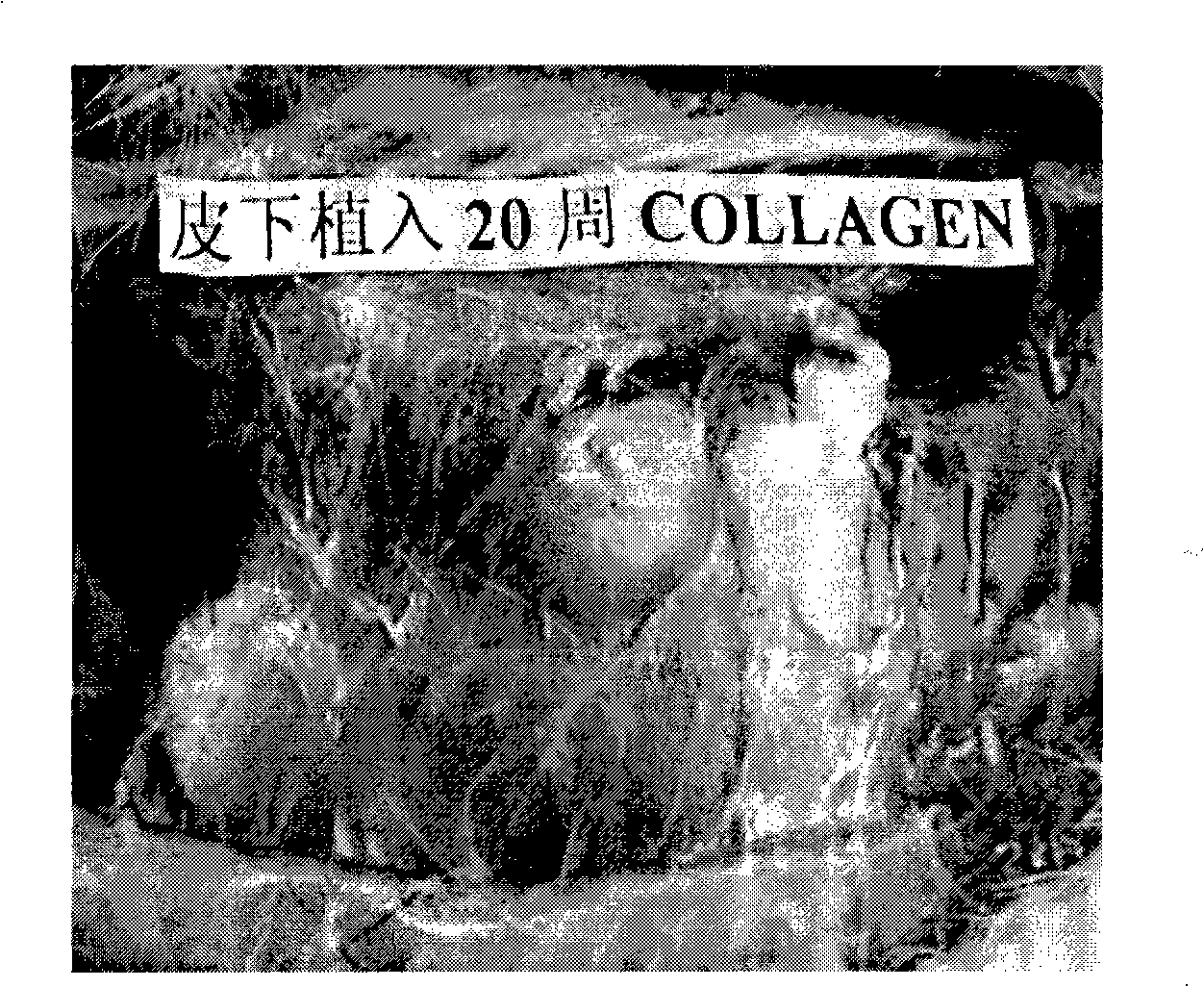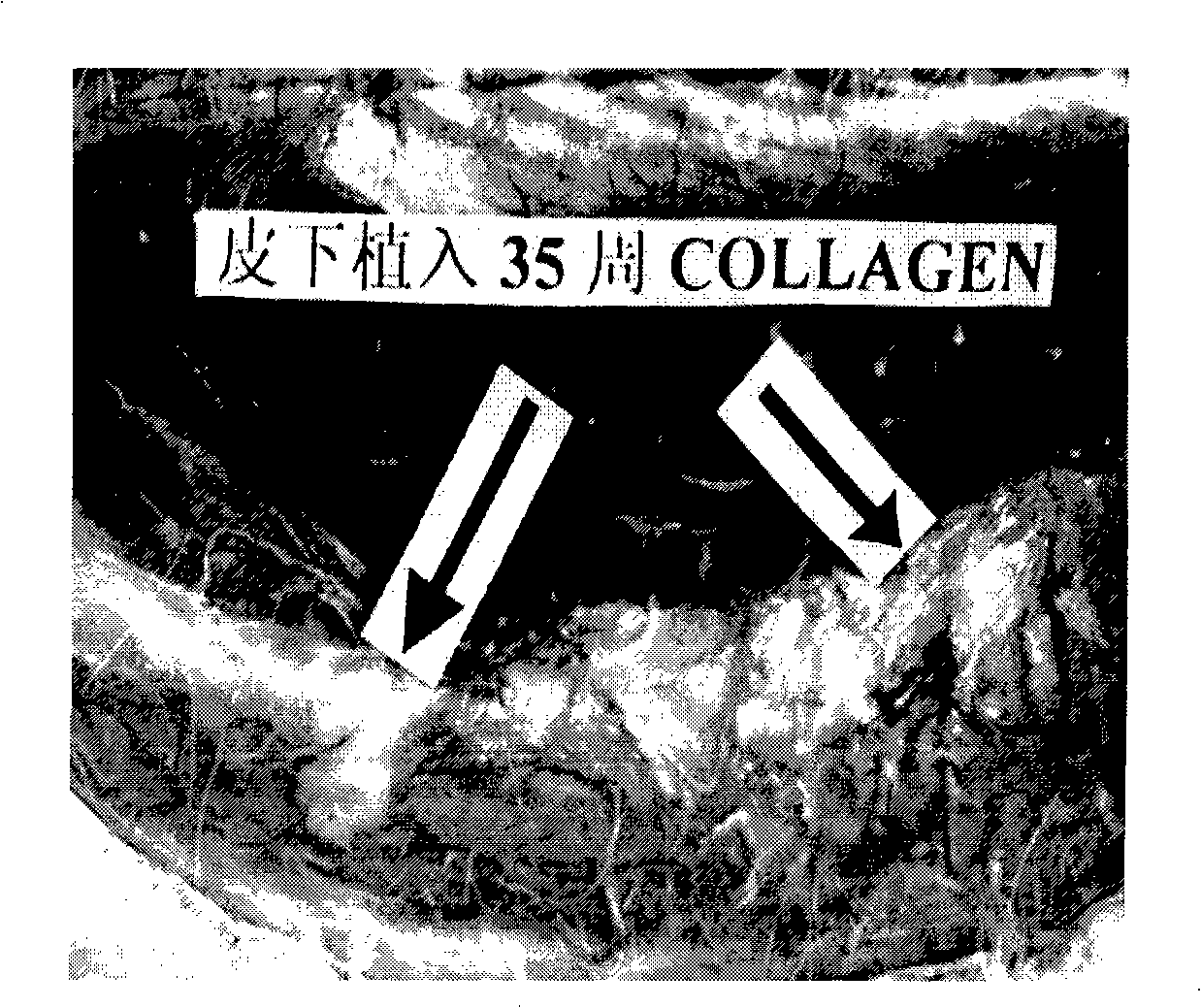Medical grade reconstructed collagen cross-linking modified method
A collagen cross-linking and cross-linking modification technology, which is applied in the fields of medical science and prostheses, can solve the problems of difficult to control degradation, cytotoxicity, etc. Effect
- Summary
- Abstract
- Description
- Claims
- Application Information
AI Technical Summary
Problems solved by technology
Method used
Image
Examples
Embodiment 1
[0032] Add 1ml of potassium phosphate solution with a concentration of 0.1mol / L to 5ml of uniform collagen solution with a concentration of 5mg / ml at a temperature of 15°C and slowly stir, adjust the pH of the mixed solution to 7.0 with an acid or alkali solution, and mix The solution is kept at a temperature of 25°C and a humidity of 50%, and it is allowed to stand for 6 hours to make it into a uniform colloid. After the colloid is placed in an environment of -20°C and -60°C for 24 hours, it is dehydrated in a freeze dryer to obtain ions Crosslinked Modified Reconstituted Collagen.
Embodiment 2
[0034] Add 5ml of sodium phosphate solution with a concentration of 0.5mol / L to 25ml of a uniform normal collagen solution with a concentration of 10mg / ml at a temperature of 20°C and slowly stir, adjust the pH of the mixed solution to 8.5 with an acid or alkali solution, and mix The solution is kept at a temperature of 40°C and a humidity of 70%, and it is allowed to stand for 12 hours to make it into a uniform colloid. After the colloid is placed in an environment of -40°C and -80°C for 48 hours, it is dehydrated in a freeze dryer to obtain ions Crosslinked Modified Reconstituted Collagen.
Embodiment 3
[0036] Add 2ml of dipotassium hydrogen phosphate solution with a concentration of 0.2mol / L to 10ml of ordinary collagen solution with a uniform concentration of 6mg / ml at a temperature of 16°C and slowly stir, and adjust the pH value of the mixed solution to 7.2 with acid or alkali solution , the mixed solution is kept at a temperature of 28°C and a humidity of 55%, and it is left to stand for 8 hours to make it into a uniform colloid. Obtain ionically cross-linked modified collagen.
PUM
 Login to View More
Login to View More Abstract
Description
Claims
Application Information
 Login to View More
Login to View More - R&D
- Intellectual Property
- Life Sciences
- Materials
- Tech Scout
- Unparalleled Data Quality
- Higher Quality Content
- 60% Fewer Hallucinations
Browse by: Latest US Patents, China's latest patents, Technical Efficacy Thesaurus, Application Domain, Technology Topic, Popular Technical Reports.
© 2025 PatSnap. All rights reserved.Legal|Privacy policy|Modern Slavery Act Transparency Statement|Sitemap|About US| Contact US: help@patsnap.com



